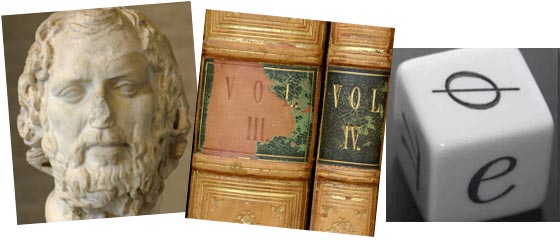 ![[Header]](../XuShared2/Line3.jpeg)

Add a Comment (Go Up to OJB's Blog Page) Favourite Things 5Entry 1502, on 2013-02-25 at 20:54:44 (Rating 1, Comments) My "favourite things" posts are an excuse to rave on about some cool stuff, according to my rather geeky standards. In the past I have talked about a spacecraft, a telescope, a smartphone, and a car. Today it is time, I think, to talk about another one of my interests: planes. So I will now talk about my favourite aircraft: the SR-71 Blackbird.
Maybe one of the attractions of the SR-71 is that, unlike many other fast jets, it is not a fighter, so it's main reason for existing is not to destroy things. It's original role was for high altitude reconnaissance and it was also used by NASA for scientific research near the end of its military career.
But of course the main reason for celebrating the SR-71 is it's speed. It set a speed record for a jet powered aircraft in 1976 and that still stands today. That is a remarkable achievement considering how technology has progressed since then. In fact, at that time it also set an altitude record but that has been surpassed since.
The actual top speed has never been officially revealed, but the record is 3,529.6 kilometers per hour (2,193.2 miles per hour, or about Mach 3.2) - the equivalent of over a mile every 2 seconds. Many people believe the aircraft could go a lot faster and one person commented if you fully opened the throttle it would just go faster and faster until it destroyed itself!
But even the official speed record is quite impressive. It is literally faster than a bullet. If you shot at the plane as it passed it would leave the bullet behind because of its superior speed. And it gets so hot during flight that the canopy gets as hot as an oven and the plane expands by 30 cm. To allow for this expansion the panels don't fit together so well when it is cold, so it leaks fuel while on the ground. No sealant was ever found which could handle the extreme temperatures and expansion of the metal during flight.
The engines worked in two modes: as a turbojet below Mach 2, then as a ramjet above that. They used about 30 tons of fuel per hour at full thrust and each of the two engines produced more power than the ocean liner Queen Mary did in total. The engines needed to be turned by a "starter motor" when starting and the only thing up to the job were two V8s with no exhaust mufflers linked together and producing over 600 horsepower. Needless to say, the noise was impressive!
Night time engine tests were truly awesome. Running the engine at full afterburner power produced a flame 30 feet long and the length of a football field away the exhaust was still over 300 degrees and moving at 150 knots. The engine became so hot that some parts of the metal became translucent and the sound was so great that the engineer's bodies shook uncontrollably even with full protective gear and standing a fair distance from the engine.
The highly modified JP7 jet fuel was actually quite difficult to ignite because it had an additive increasing its flash point which prevented it from breaking down at high temperatures. This made it difficult to start the engines and fire up the afterburners so a chemical called triethylborane was used. It has the interesting property of exploding when exposed to air! There was a tank of this material which was enough to start the engines and light the burners about 16 times during flight.
The plane, which was over 100 feet in length, was made 85% from titanium which actually strengthened after heating. All of the tools used for servicing were produced specially for the job because normal cadmium-plated tools would have caused corrosion.
The pilots wore a suit similar to an astronaut's and the pre-flight check took over three hours to complete. But despite those issues pilots loved the Blackbird and there are many accounts of it's incredible performance. Here's a pilot describing the experience of take-off: "Both burners light at the same time. You can feel the acceleration and you just point the nose at the sky and go. There is nothing... nothing in the world to compare to that feeling."
On 7 December 1903 Wilbur Wright flew the Wright Flyer at almost 7 miles per hour. I think he would have been rather impressed if he had been taken for a flight in the SR-71, just 60 years later.
A lot of the material in this entry came from the book "SR-71 Revealed: The Inside Story" which is full of interesting information about the Blackbird. There are also many web sites and movies dedicated to this amazing aircraft.
 There are no comments for this entry. 
You can leave comments about this entry using this form. To add a comment: enter a name and email (both optional), type the number shown above, enter a comment, then click Add.
Note that you can leave the name blank if you want to remain anonymous.
Enter your email address to receive notifications of replies and updates to this entry.
The comment should appear immediately because the authorisation system is currently inactive.
![[Comments]](../XuShared/Comment1B.jpeg) ![[Preview]](../XuShared/Comment6B.jpeg) ![[Blog]](../XuShared/Up2B.jpeg)
|

![[Comments]](../XuShared/Comment1B.jpeg)
![[Preview]](../XuShared/Comment6B.jpeg)
![[Blog]](../XuShared/Up2B.jpeg)